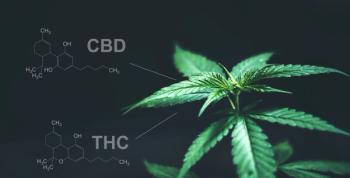
Cervicitis CDC 2006
2. Direct microscopy: >10 WBC in vaginal fluid (in the absence of T.V.): sensitive indicator of cervical inflammation caused by C.T. or N.G., with a high negative predictive value.
Etiology
1.C. trachomatis (CT)
2.N. gonorrhoeae (NG)
3.Trichomoniasis (TV) and Bacterial vaginosis (BV)
4. M. genitalium and HSV-2.
5. Majority of cases: no organismis isolated.
Frequent douching
Persistent abnormality of vaginal flora
Chemical irritants
idiopathic inflammation of ectopy
Symptoms
• Frequently is asymptomatic
• Abnormal vaginal discharge
• Intermenstrual vaginal bleeding
• Contact bleeding (after SI).
Signs
2 major
1) Mucopurulent discharge in endocervical canal or on an endocervical swab
2) Endocervical bleeding by passage of a cotton swab.
Mucopurulent discharge from cervix on a swab
(positive swab test)
Diagnosis
1. Assessment for signs of PID: {cervicitismight be a sign of endometritis}
2. Direct microscopy: >10 WBC in vaginal fluid (in the absence of T.V.): sensitive indicator of cervical inflammation caused by C.T. or N.G., with a high negative predictive value.
3. Gram stain: increased number of WBC not available in the majority of clinics. low PPV for infection with C.T and N.G insensitive {observed in only 50%}.
3. Test for C.T and for N.G: NAAT (nucleic acid amplification tests).
4. Test for BV and TV.
TV:
• Microscopy {sensitivity is low (50%)}
• Culture or antigen-based detection: if
microscopy is negative
BV:
3 of the following S or S:
1. Homogeneous, thin, white discharge that smoothly coats the vaginal walls
2. Clue cells on microscopic examination
3. pH of vaginal fluid >4.5
4. Fishy odor of vaginal discharge before or after addition of 10% KOH (Whiff test).
5. Testing 5. for HSV-2 (culture or serologic testing): value is unclear.
6. Tests for M. genitalium: not commercially available.
Treatment
1. C. T:
a. increased risk for STD (age <25 years, new or multiple sex partners, and unprotected sex)
b. follow-up cannot be ensured
c. insensitive diagnostic test (not a NAAT) is used.
2. Concurrent therapy for N.G: if the prevalence is high (>5%).
3. T.V. or BV: if detected.
Recommended Regimens for Presumptive Treatment*
Azithromycin (Zithromax) 1 g orally in a single dose
OR
Doxycycline 100 mg orally twice a day for 7 days
•Azithromycin (Zithromax) is safe and effective during
pregnancy
Recommended Regimens of Uncomplicated Gonococcal
Infections of the Cervix, Urethra, and Rectum
Ceftriaxone 125 mg IM in a single dose
OR
Cefixime 400 mg orally in a single dose
OR
Ciprofloxacin 500 mg orally in a single dose*
OR
Ofloxacin 400 mg orally in a single dose*
OR
Levofloxacin 250 mg orally in a single dose*
PLUS
TREATMENT FOR CHLAMYDIA IF CHLAMYDIAL INFECTION IS NOT RULED OUT
BV:
Recommended Regimens
Metronidazole 500 mg orally twice a day for 7 days
OR
Metronidazole gel, 0.75%, one full applicator (5 g) intravaginally, once a day for 5 days
OR
Clindamycin cream, 2%, one full applicator (5 g) intravaginally at bedtime for 7 days
Alternative Regimens
Clindamycin 300 mg orally twice a day for 7 days
OR
Clindamycin ovules 100 g intravaginally once at bedtime for 3 days
Routine treatment of sex partners is not recommended.
TV:
Recommended Regimens
Metronidazole 2 g orally in a single dose
OR
Tinidazole 2 g orally in a single dose
Alternative Regimen
Metronidazole 500 mg orally twice a day for 7 days
Sex partners: should be treated.
Recurrent and Persistent Cervicitis
1. Exclude relapse and/or reinfection with a specific STD
2. Exclude BV
3. Sex partners: evaluated and treated
4. Repeated or prolonged administration of antibiotic therapy.
5. Ablative or superficial excisional therapy
Follow-Up
• As recommended for each infections
• If f symptoms persist, women should be instructed to return for reevaluation.
Management of Sex Partners
1. Examination.
2. Avoid SI {avoid re-infection} until therapy is completed (7 days after a single-dose regimen or after completion of a 7-day regimen).
Newsletter
Get the latest clinical updates, case studies, and expert commentary in obstetric and gynecologic care. Sign up now to stay informed.



